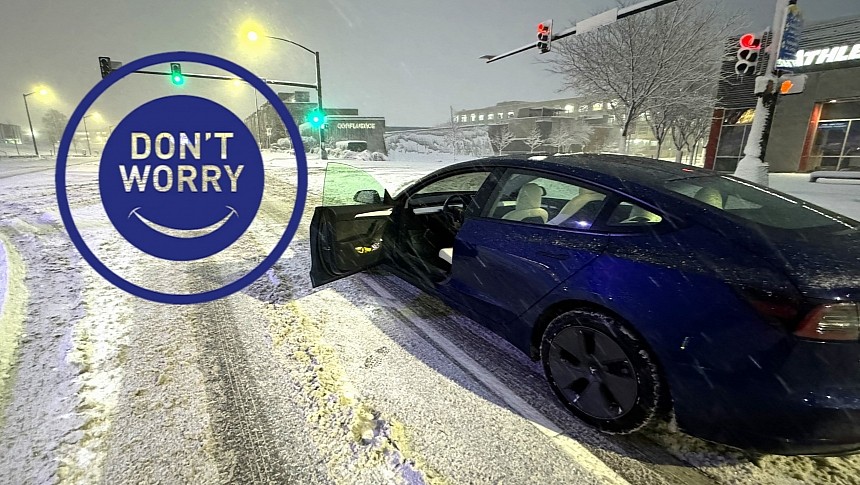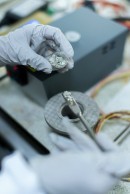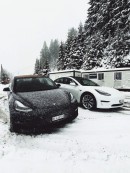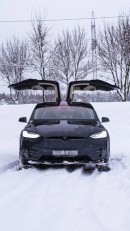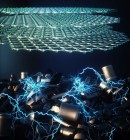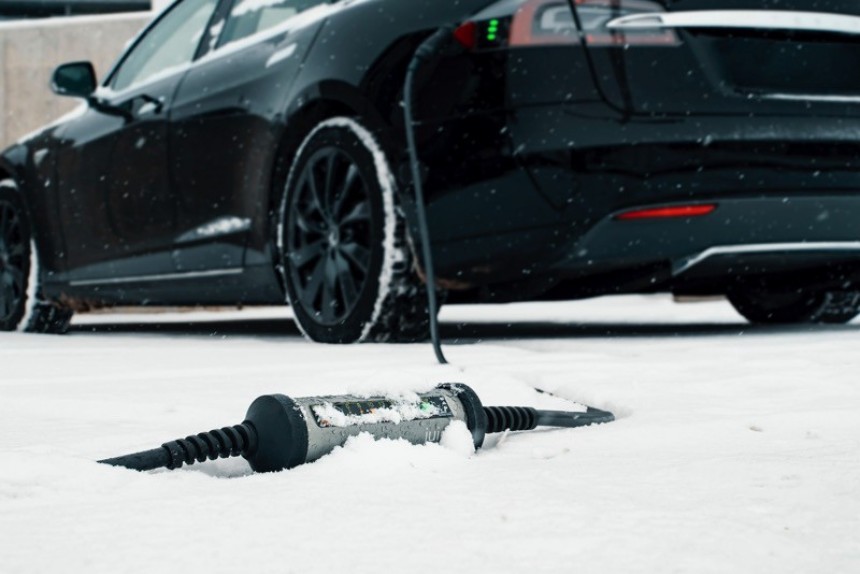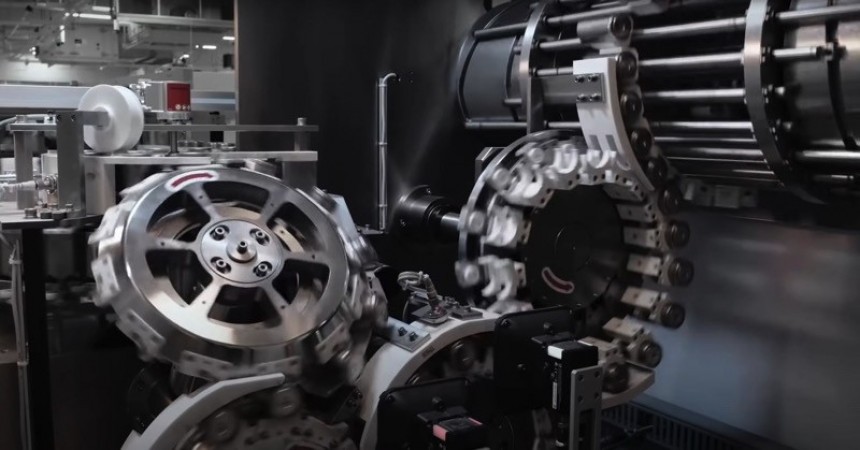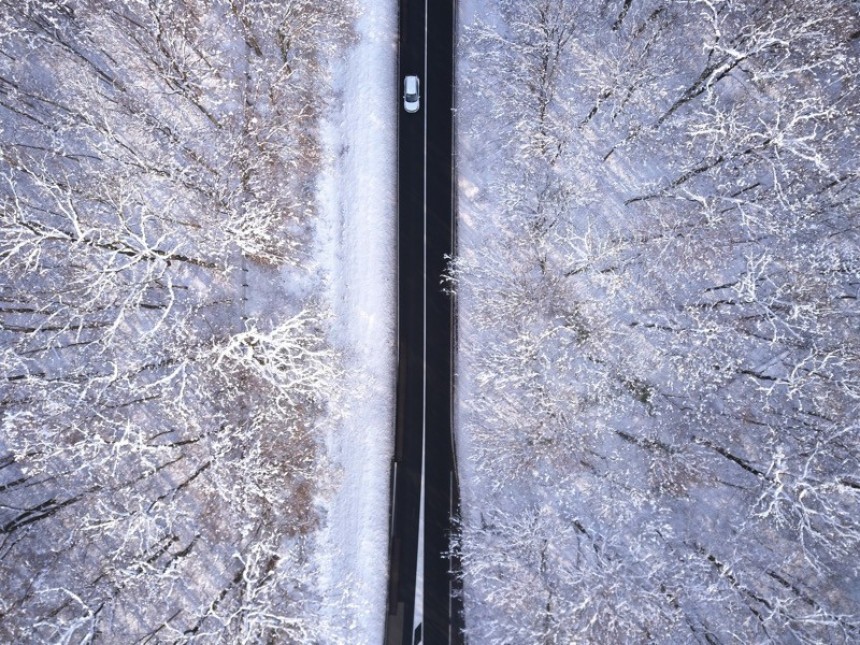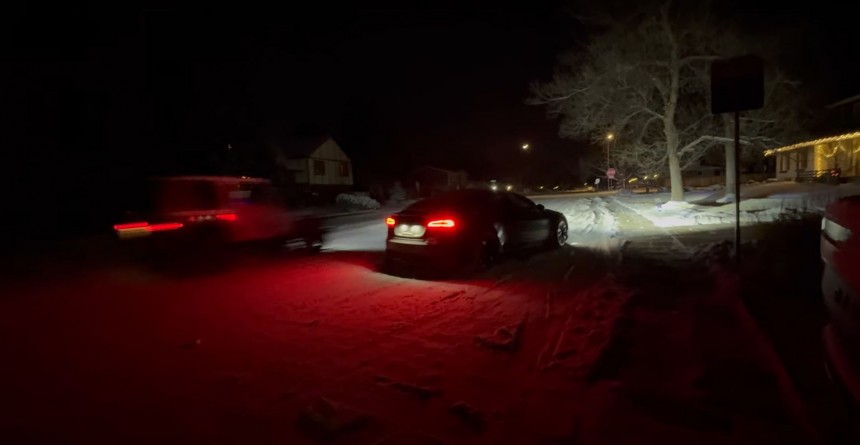Last year, all-electric vehicle sales increased by 50% in the US. There are over four million zero-emission vehicles on the road. Most of that growth happened thanks to Tesla's Model Y and Model 3. Somewhat unsurprisingly, the recent reports about EVs not working during very low temperatures also revolve around Tesla. But here's why you shouldn't dismiss the idea of buying a battery-electric ride just because some people bash them without giving you the full picture.
According to the US Department of Energy, all-electric vehicles had a market share of nearly 7.5% in 2023. Over 55% of all the new EV sales were Teslas. While the world's most valuable automaker might lose some market share because of rivals like Ford, Hyundai, Kia, Rivian, VW, and General Motors, it still keeps its well-deserved crown.
No matter who's at its helm, Tesla deserves recognition for accelerating the transition to gas- and diesel-free motoring. You may not agree with it or think that battery-powered cars are a thing, but the good news is that we have choices. Nobody's forcing EVs on us – for now. We'll see what the future holds.
In the last couple of days, we saw multiple reports about electric vehicles (predominantly Teslas) not being able to replenish their energy storage units at Superchargers or not starting at all. A news outlet interviewed someone who said the parking lot was "filled with dead robots." That made the rounds online as netizens finally got another negative thing to point out about zero-emission cars.
Now, we're no strangers here, at autoevolution, about criticizing Tesla or any other car brand for doing shady stuff. But these ludicrous stories regarding freezing temperatures aren't providing any value to anyone. They're just instilling fear for all the wrong reasons.
All those reports about bricked EVs and broken Superchargers prove that we still have much more to learn about battery-electric propulsion. Extremely low temperatures are uncommon in most parts of the US. As such, it's not surprising that some outlets are taking advantage of the occasion to engage in some fearmongering.
But, get this: in 2023, 82.4% of new-car sales were battery-electric. Tesla is the leader over there. The country that has a sovereign wealth fund built mostly out of oil and natural gas exports learned to love EVs despite the threat of the cold.
Some detractors might be quick to point out that about 5.5 million Norwegians live in an area of 148,729 sq-mi, whereas the US has 66 times more citizens and is over 25 times larger. They wouldn't be wrong.
However, looking again up north but on our side of the world, we'll find Canada. A couple of days ago, many drivers had to face a delicate situation: the gas pumps froze. Temperatures of -33 F (-36 C) forced many drivers to delay their plans.
You can charge an EV at home, the office, or a parking lot with Level 2 or Level 3 dispensers. You can't fill up with diesel or gas at home. Heck, even some domestic sockets can suffice in such harsh weather conditions.
Newer Teslas also have a very useful feature called "Defrost Car" that can be activated from the app. It melts snow, ice, and frost on the windshield, windows, and mirrors, but it also gets the high-voltage battery ready for action by bringing it close to an optimal running temperature. Using the built-in "Trip Planner" also pre-heats the energy storage unit to get it nice and toasty for a quick Supercharging session. The car knows what to do. You just have to give the signal.
Don't forget that while Tesla may not want to invest too much in nice cabin materials and build quality, it does spend money on technology. After all, the company's CEO said publicly that the brand manufactures "computers on wheels."
But it's not just cars suffering when winter wreaks havoc. Back in the US, flights landing at Chicago's O'Hare International Airport have been delayed by hours because of snow, ice, and freezing cold.
At the same time, it's no secret that the most popular battery chemistries aren't good friends with freezing weather. However, internal combustion engine-powered cars are also impacted. Fuel consumption increases because the engine has to do more work to reach its optimal running temperature.
But if everything I told you about all-electric vehicles up until this point didn't convince you that you could make the switch without worrying about increased cold weather sensitivity, then here's yet another test done at -10 degrees Fahrenheit (-23 degrees Celsius) that proves you can put your faith into a battery-powered car.
A YouTuber known for being an EV enthusiast and connoisseur decided to simulate a classic winter traffic jam. He drove a Tesla Model S very slowly for around an hour while keeping the A/C, the heated steering wheel, and the front seats on. He covered three miles and consumed 2 kWh of energy. Were the battery fully charged at the start, he would have still had around 98% to toy around with.
Thus, at least based on this simulation, a Model S should allow you to face stop-and-go traffic comfortably for around 48 hours without giving up on heating. But that would be stretching it to the limit, so let's say 35 to 40 hours. That's enough time for the emergency services to come, for the snow plows to clear the road, or for you to arrive at a Supercharger or a resting place.
However, the Model S was preconditioned and was ready for this short but time-consuming trip. Could you trust an EV left outside to run like a normal car after sitting in freezing weather overnight?
Well, Out of Spec Reviews' testing procedure found out that a heavily used Tesla Model 3 will turn on and drive without any complaints or failures. The car didn't even have a heat pump! So, increased efficiency was out of the question from the get-go. Still, the EV got the cabin toasty pretty quickly and was ready to start driving without any issues.
The Model 3 covered four miles at an efficiency of 2.1 kWh per mile. It consumed a bit over 8 kWh while going at an average speed of 4 miles per hour in four-degree weather. A full battery would be enough to keep you and those traveling with you safe and warm for approximately half a day.
The only thing you must do is be a responsible driver, no matter what type of car you own or rent. Knowing that your ride is well-maintained, verifying tire pressure, checking the weather, listening to local or national news radio, having the necessary gear onboard, and keeping in touch with local emergency services departments (following them on social media should suffice) are things you might want to do before heading out into the wild.
As things stand today, most EVs will endure the harshness of winter with or without preconditioning. Just make sure your battery is charged, or a running high-power pedestal is close by. Seriously, it's that easy.
No matter who's at its helm, Tesla deserves recognition for accelerating the transition to gas- and diesel-free motoring. You may not agree with it or think that battery-powered cars are a thing, but the good news is that we have choices. Nobody's forcing EVs on us – for now. We'll see what the future holds.
In the last couple of days, we saw multiple reports about electric vehicles (predominantly Teslas) not being able to replenish their energy storage units at Superchargers or not starting at all. A news outlet interviewed someone who said the parking lot was "filled with dead robots." That made the rounds online as netizens finally got another negative thing to point out about zero-emission cars.
Now, we're no strangers here, at autoevolution, about criticizing Tesla or any other car brand for doing shady stuff. But these ludicrous stories regarding freezing temperatures aren't providing any value to anyone. They're just instilling fear for all the wrong reasons.
Taking a look around
Let's divert our attention for a minute to Norway. The northern European country has a national average temperature of 52 degrees Fahrenheit (12 degrees Celsius). Half of the country or more can experience a bone-chilling -40 degrees Fahrenheit (-40 degrees Celsius) during winter!But, get this: in 2023, 82.4% of new-car sales were battery-electric. Tesla is the leader over there. The country that has a sovereign wealth fund built mostly out of oil and natural gas exports learned to love EVs despite the threat of the cold.
Some detractors might be quick to point out that about 5.5 million Norwegians live in an area of 148,729 sq-mi, whereas the US has 66 times more citizens and is over 25 times larger. They wouldn't be wrong.
However, looking again up north but on our side of the world, we'll find Canada. A couple of days ago, many drivers had to face a delicate situation: the gas pumps froze. Temperatures of -33 F (-36 C) forced many drivers to delay their plans.
Comfortably catering to a larger audience
Obviously, there's more than one upside to EV ownership. But running costs can drop significantly if you have a home with a driveway or garage. Waking up to a fully charged car is reassuring, especially if you have some solar panels on the roof and don't pay full price for the electrons going into the battery.Newer Teslas also have a very useful feature called "Defrost Car" that can be activated from the app. It melts snow, ice, and frost on the windshield, windows, and mirrors, but it also gets the high-voltage battery ready for action by bringing it close to an optimal running temperature. Using the built-in "Trip Planner" also pre-heats the energy storage unit to get it nice and toasty for a quick Supercharging session. The car knows what to do. You just have to give the signal.
Don't forget that while Tesla may not want to invest too much in nice cabin materials and build quality, it does spend money on technology. After all, the company's CEO said publicly that the brand manufactures "computers on wheels."
But it's not just cars suffering when winter wreaks havoc. Back in the US, flights landing at Chicago's O'Hare International Airport have been delayed by hours because of snow, ice, and freezing cold.
Trapped in winter traffic with an EV? Be like Bobby McFerrin!
"Don't worry. Be happy!" should be in your Spotify or Apple Music playlist. Of course, that's only possible if you prepare correctly ahead of time. Any trip during winter requires the proper tires, enough gas or electricity in the fitting storage unit, water, a snack, a blanket, a shovel, and even snow chains. Otherwise, you're leaving yourself open to chance.But if everything I told you about all-electric vehicles up until this point didn't convince you that you could make the switch without worrying about increased cold weather sensitivity, then here's yet another test done at -10 degrees Fahrenheit (-23 degrees Celsius) that proves you can put your faith into a battery-powered car.
A YouTuber known for being an EV enthusiast and connoisseur decided to simulate a classic winter traffic jam. He drove a Tesla Model S very slowly for around an hour while keeping the A/C, the heated steering wheel, and the front seats on. He covered three miles and consumed 2 kWh of energy. Were the battery fully charged at the start, he would have still had around 98% to toy around with.
However, the Model S was preconditioned and was ready for this short but time-consuming trip. Could you trust an EV left outside to run like a normal car after sitting in freezing weather overnight?
Well, Out of Spec Reviews' testing procedure found out that a heavily used Tesla Model 3 will turn on and drive without any complaints or failures. The car didn't even have a heat pump! So, increased efficiency was out of the question from the get-go. Still, the EV got the cabin toasty pretty quickly and was ready to start driving without any issues.
The Model 3 covered four miles at an efficiency of 2.1 kWh per mile. It consumed a bit over 8 kWh while going at an average speed of 4 miles per hour in four-degree weather. A full battery would be enough to keep you and those traveling with you safe and warm for approximately half a day.
The only thing you must do is be a responsible driver, no matter what type of car you own or rent. Knowing that your ride is well-maintained, verifying tire pressure, checking the weather, listening to local or national news radio, having the necessary gear onboard, and keeping in touch with local emergency services departments (following them on social media should suffice) are things you might want to do before heading out into the wild.
As things stand today, most EVs will endure the harshness of winter with or without preconditioning. Just make sure your battery is charged, or a running high-power pedestal is close by. Seriously, it's that easy.
